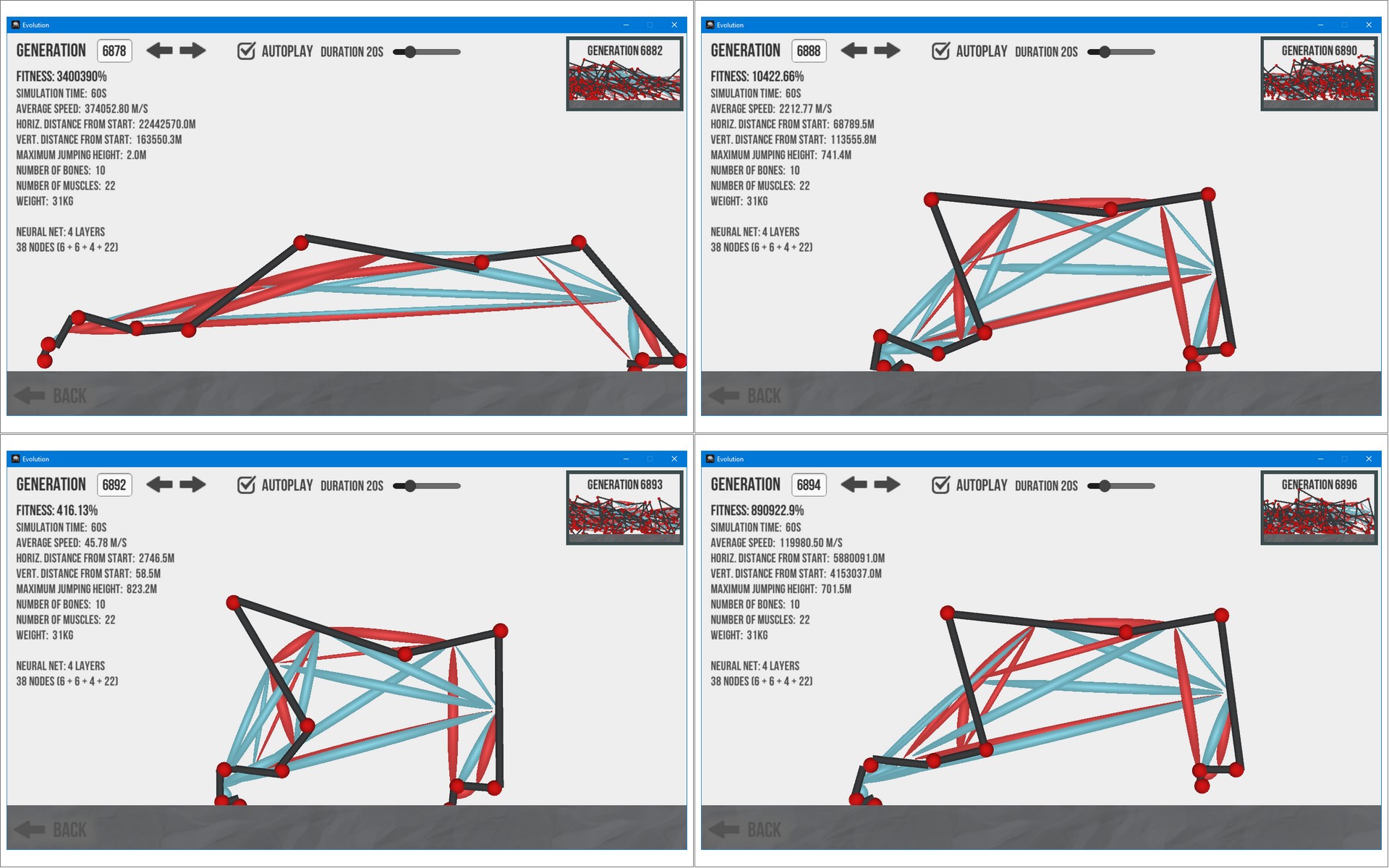Thanks!
I use TextMesh Pro to be able to inline images into the help text. It seems like I have to go though a whole process to upgrade the project to make sure TextMesh Pro continues to work properly.
Internally the currentCreatureBatch array is always used to simplify the implementation. When you turn off batch-simulation, it's practically the same as if you manually set the batch size to the population count. The sorting has to be done on currentGeneration in oder for it to sort the entire population and not just the current batch before the selection step, but if you have batches turned off, both arrays contain the same creatures anyway, so it doesn't make a difference.
The SetActive(false) is definitely necessary. Removing it changes the behaviour of the creatures and therefore also any previously saved simulation. That's why you see the fitness drop from 11.5 to 8.5. Since the entire movement relies on Unity's physics system, it is incredibly easy to break accidentally (I wasted a lot of time on exactly this one SetActive(false) call when writing the optimization branch). So even if this was causing the problems you are referring to, I couldn't just remove the call but would have to work around it in another way. That being said, GameObjects in Unity don't lose their transform position values when you deactivate them, so the values should still all be valid at that point in time.
Thanks for helping me debug this by the way! I'm sorry I can't test the actual project at the moment, but I will as soon as I have time. The creature movement looks great by the way!


